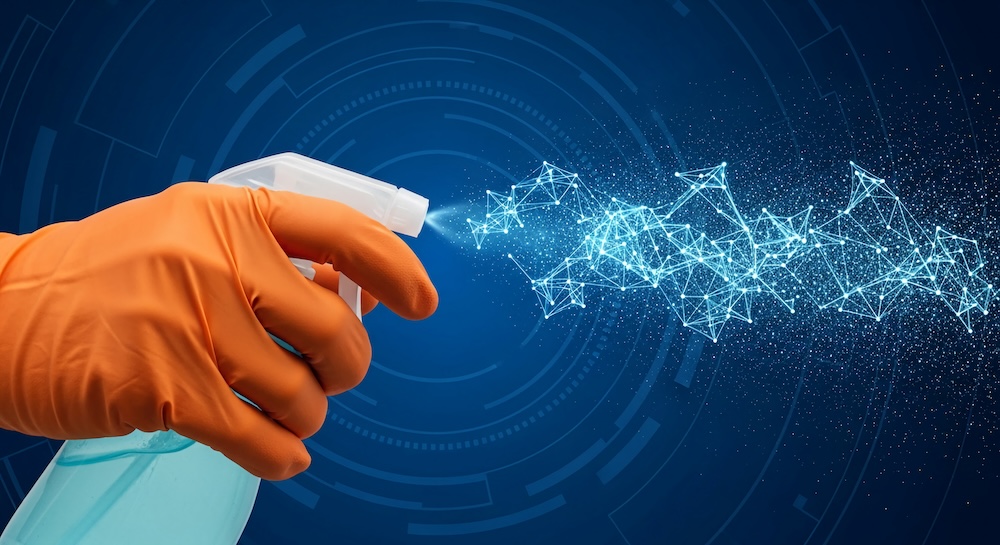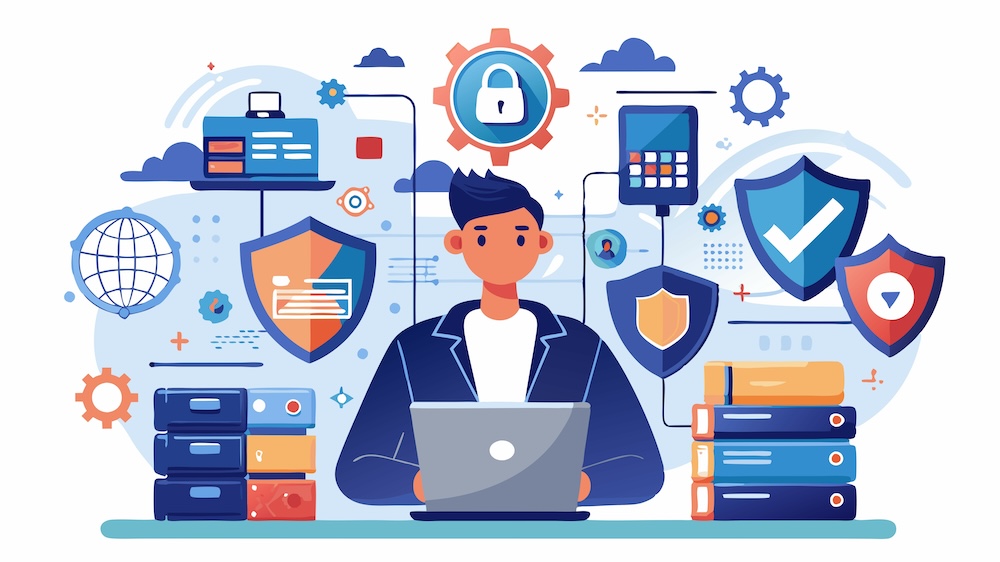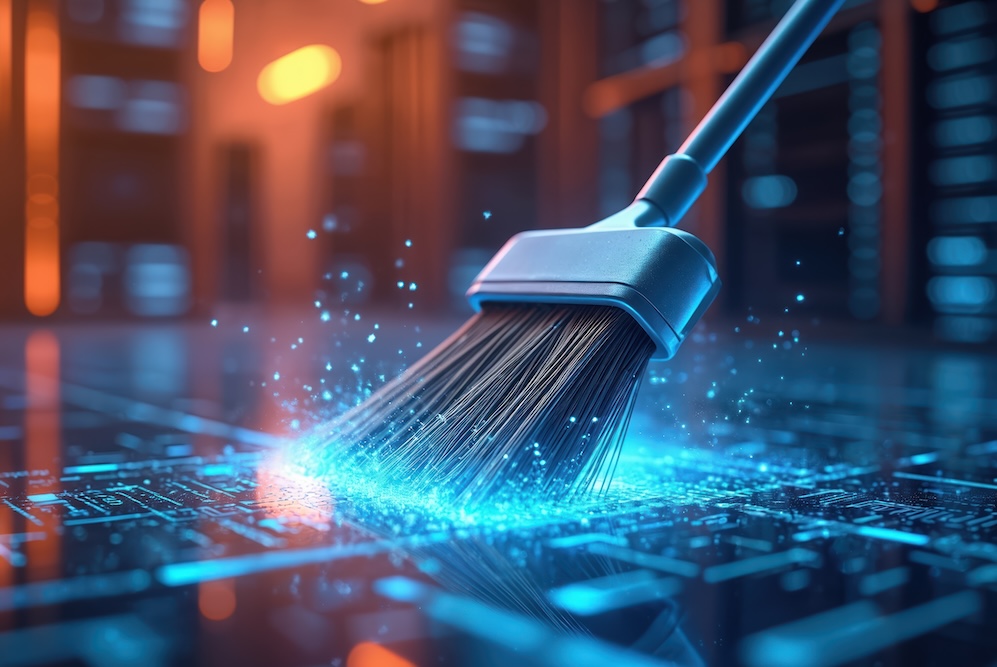Just like maintaining a building or keeping equipment serviced, your technology systems need regular care to work at their best. IT hygiene is simply the practice of keeping your technology environment clean, secure, and running smoothly.
When routine upkeep falls by the wayside, small and mid-sized businesses face real problems: cyberattacks that expose customer information, unexpected system crashes that bring work to a standstill, and sluggish performance that leaves everyone frustrated. The cost of fixing these issues almost always exceeds what prevention would have cost.
Here’s the encouraging part: keeping your systems healthy doesn’t require a massive overhaul or dedicated IT staff. Today’s tools like automation and virtual desktop infrastructure make it easier than ever for SMBs to maintain reliable systems without the complexity. This blog will walk you through what good IT practices look like in action and show you why they’re one of the most valuable steps you can take for your company.
What Is IT Hygiene?
IT hygiene is the practice of keeping your company’s technology systems, from desktops and laptops to cloud software and networks, secure, reliable, and optimized. It’s an ongoing cleaning routine that helps systems run smoothly and prevents hidden risks for your business.
Some examples include:
- Installing software patches and updates regularly.
- Removing old or unused user accounts.
- Backing up critical data to secure locations.
- Monitoring devices and networks for unusual activity.
- Keeping physical equipment dust-free and properly maintained.
For SMBs, strong IT practices are essentially about prevention. Instead of waiting for something to break, you address potential problems early, so your team doesn’t lose valuable time scrambling to fix an issue in the middle of a busy workday.

Why SMBs Can’t Afford to Ignore IT Hygiene
Larger enterprises often have entire IT departments devoted to maintaining systems, but SMBs typically run leaner. This makes solid maintenance practices even more important because one overlooked update or vulnerability can cause significant damage.
Security Risks
Hackers often target SMBs because they assume smaller companies don’t have strong security measures in place. Outdated software, weak passwords, or inactive user accounts make it easier for cybercriminals to break in. Poor upkeep creates open doors that attackers are more than willing to exploit.
Downtime Costs
Every hour your systems are down, your business loses productivity and revenue. For SMBs, even a single day of downtime can be devastating. Regular care helps prevent unexpected breakdowns by catching small issues before they turn into big disruptions.
Regulatory Compliance
Industries like healthcare, finance, and education face strict data protection requirements. Failing to keep systems patched, secure, and monitored could mean hefty fines, and even worse, loss of trust from customers.
Neglecting IT hygiene is a gamble most SMBs can’t afford. The good news: consistent, proactive attention goes a long way toward lowering these risks.
Core Elements of Strong IT Hygiene
Regular Software Updates and Patching
Outdated software is one of the leading causes of security breaches. Setting a routine for applying patches ensures known vulnerabilities are fixed before attackers can exploit them.
Data Backup and Disaster Recovery Plans
Every SMB should have automatic backups in place, stored securely on- and off-site or in the cloud. Regular testing of recovery plans ensures you can restore data quickly if an outage, attack, or disaster occurs.
Access Control and Account Management
Inactive employee accounts or shared logins are major risks. Good IT management means reviewing user access regularly, enforcing password policies, and removing old accounts promptly.
Hardware and Device Maintenance
Just like cars need oil changes, computers and printers need regular care. Cleaning vents, updating drivers, and monitoring performance help extend equipment life and keep employees productive.
Cloud and Network Monitoring
Monitoring networks and cloud services for unusual activity or usage spikes can catch security incidents early. Many tools now automate alerts when something looks suspicious.
Together, these practices create a foundation that keeps your technology secure, reliable, and aligned with your business needs. 
The Role of Automation in IT Hygiene
One of the biggest challenges SMBs face is finding the time and resources to stay on top of maintenance. This is where automation becomes invaluable.
How Automation Helps
- Automated patch management: Updates can be scheduled and deployed across all devices at once.
- Backup scheduling: No one has to remember to run backups. They happen automatically on a set routine.
- Monitoring and alerts: Automated systems can scan for unusual activity, sending real-time alerts if something seems off.
- Reporting: Automation makes it easy to generate compliance or performance reports without manual tracking.
By reducing human error and ensuring consistency, automation helps SMBs keep their systems healthy without adding to their workload. It also reduces the time teams spend on repetitive IT tasks.
For many SMBs, working with a Managed Services provider (MSP) is the easiest way to access these automation tools without having to purchase or manage them in-house.
How Virtual Desktop Infrastructure (VDI) Supports Better IT Hygiene
Another technology that simplifies everyday IT management is Virtual Desktop Infrastructure (VDI). Instead of every employee having a separate, independently managed workstation, VDI centralizes desktops in a secure environment that can be managed remotely.
Advantages of VDI
- Centralized updates: IT can roll out patches and upgrades to every user at once, ensuring no device is left behind.
- Stronger security: Sensitive data lives in the secure data center or cloud, not on individual endpoints that can be lost or stolen.
- Simplified access control: Permissions and policies can be applied consistently across all users.
- Reduced shadow IT: Employees use approved, managed desktops instead of installing unverified tools.
For SMBs with hybrid or remote teams, VDI provides a way to keep systems consistent across locations without relying on employees to maintain their own devices. It creates a more secure, manageable, and scalable IT environment.

Long-Term Benefits of Good IT Hygiene for SMBs
Improved Productivity
When systems run smoothly, employees spend less time dealing with crashes, slow computers, or missing files. Preventive care translates directly into a more productive workforce.
Lower IT Costs
Proactive maintenance is far less expensive than emergency fixes. By addressing issues early, SMBs can avoid costly downtime and reduce the need for large-scale repairs or replacements.
Stronger Customer Trust
Customers expect businesses to protect their data. Demonstrating responsible IT practices builds trust and helps maintain your reputation.
Scalability and Growth Support
As your business grows, so does the demand on your IT systems. Regular upkeep ensures your technology infrastructure can scale smoothly instead of collapsing under the strain.
Simply put, investing in IT hygiene is investing in your company’s future.
Building a Routine for IT Hygiene
Keeping IT systems in good shape takes consistency. Here’s a simple checklist SMBs can follow:
- Monthly: Apply updates, check backups, review access logs.
- Quarterly: Audit accounts, test disaster recovery procedures, clean and inspect hardware.
- Annually: Conduct a full IT assessment, review security policies, evaluate vendor or MSP support.
SMBs should also decide whether to handle IT maintenance in-house or partner with an MSP. Outsourcing often provides access to advanced tools, automation, and expertise at a lower cost than hiring full-time IT staff.
The Bottom Line
For SMBs, IT hygiene shouldn’t be considered optional. It’s the foundation that keeps systems secure, employees productive, and businesses resilient against cyber threats and downtime. By prioritizing regular updates, backups, access control, and device maintenance, SMBs can avoid costly risks and set themselves up for sustainable growth.
The good news is that modern tools like automation and Virtual Desktop Infrastructure (VDI) make it easier than ever to maintain healthy IT systems. Whether you manage it internally or through a trusted IT partner, building good habits around IT care will pay off in lower costs, fewer disruptions, and greater peace of mind.
About hubTGI
hubTGI is a Canadian-owned Managed Services provider that offers Print Services, Workflow Solutions, Managed IT, Cybersecurity Solutions, Cloud Services and VoIP to help their customers control costs, secure their data and make their people more productive.
For the latest industry trends and technology insights visit hubTGI’s Resources page.






